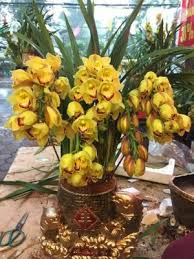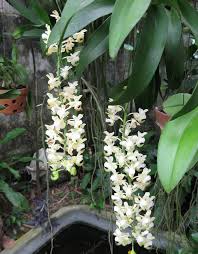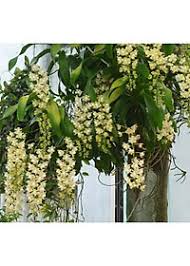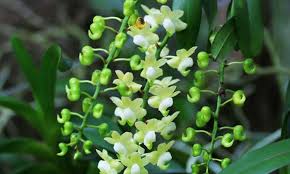
Growing Sato Cymbidium orchids in a greenhouse can be a rewarding endeavor, providing an ideal environment for these beautiful plants to thrive. However, like any horticultural pursuit, it comes with its own set of challenges. In this article, we will explore common issues encountered when cultivating Sato Cymbidium orchids in greenhouses and provide practical solutions to help you maintain healthy, vibrant plants.
## 1. Understanding Sato Cymbidium Orchids
Before delving into the challenges of growing Sato Cymbidium orchids, it’s essential to understand their unique characteristics and requirements. Sato Cymbidium orchids, known for their striking blooms and versatility, thrive in environments that closely mimic their native habitats. Native to Southeast Asia, these orchids prefer moderate temperatures, high humidity, and bright, indirect light.
### 1.1 Characteristics of Sato Cymbidium Orchids
– **Growth Habit**: Sato Cymbidium orchids typically grow in pseudobulbs, which store water and nutrients. This growth habit allows them to survive in varying environmental conditions.
– **Flowering**: These orchids produce large, showy flowers that can last for weeks, making them a popular choice for both decorative and ceremonial purposes.
– **Foliage**: Their leaves are long, strap-like, and arching, contributing to their elegant appearance.
Understanding these characteristics is crucial to addressing the issues that may arise in a greenhouse setting.
## 2. Common Issues in Growing Sato Cymbidium Orchids
### 2.1 Temperature Fluctuations
One of the most significant challenges in greenhouse cultivation is maintaining stable temperature conditions. Sato Cymbidium orchids thrive in a temperature range of 65°F to 75°F (18°C to 24°C) during the day and a slightly cooler range of 55°F to 65°F (13°C to 18°C) at night.
#### Potential Problems:
– **Heat Stress**: During hot summer months, greenhouse temperatures can soar, leading to heat stress. Symptoms include wilting leaves, sunburned leaf tips, and stunted growth.
– **Cold Stress**: Conversely, during the winter months, sudden drops in temperature can cause cold stress, leading to yellowing leaves and root rot.
#### Solutions:
– **Temperature Control**: Invest in proper ventilation systems, fans, and shade cloths to help regulate temperatures. Automated thermostats can also help maintain optimal conditions.
– **Heating Systems**: In colder months, consider using heaters to keep temperatures within the desired range. Ensure that heat sources are placed away from direct contact with the plants to prevent burning.
– **Monitoring Devices**: Use temperature and humidity monitors to keep track of conditions in the greenhouse, allowing for timely adjustments.
### 2.2 Humidity Management
Sato Cymbidium orchids prefer humidity levels between 50% and 70%. In a greenhouse, achieving and maintaining this level can be challenging.
#### Potential Problems:
– **Low Humidity**: Dry conditions can lead to leaf curling, browning tips, and poor flowering.
– **High Humidity**: Conversely, excessive humidity can create a breeding ground for fungal diseases, leading to root rot and leaf spot.
#### Solutions:
– **Misting**: Regular misting of the plants can help increase humidity, particularly during dry periods. However, avoid excessive misting that can lead to water pooling.
– **Humidity Trays**: Place shallow trays filled with water and pebbles near the plants. As water evaporates, it will increase humidity around the orchids without waterlogging the roots.
– **Dehumidifiers**: If humidity levels become too high, consider using dehumidifiers to help maintain balance.
### 2.3 Light Levels
Light is crucial for the growth and flowering of Sato Cymbidium orchids. These plants thrive in bright, indirect light but can suffer from too much direct sunlight.
#### Potential Problems:
– **Insufficient Light**: Inadequate lighting can result in leggy growth, poor flowering, and overall weak plants.
– **Excessive Light**: On the other hand, too much direct sunlight can scorch leaves, causing brown patches and wilting.
#### Solutions:
– **Shading**: Use shade cloth or blinds to diffuse strong sunlight during peak hours. A shade level of 30% to 50% is often ideal.
– **Rotation**: Rotate your orchids regularly to ensure all sides receive adequate light, promoting balanced growth.
– **Supplemental Lighting**: In areas with limited natural light, consider using grow lights to supplement sunlight, particularly during shorter winter days.
### 2.4 Pest Infestations
Pests can be a significant issue in greenhouses, where humidity and warmth create an inviting environment for various insects.
#### Common Pests:
– **Mealybugs**: These small, white, cotton-like pests can infest leaves and stems, sucking sap and weakening the plant.
– **Aphids**: Tiny green or black insects that can distort new growth and transmit diseases.
– **Spider Mites**: Microscopic pests that thrive in dry conditions, leading to yellowing leaves and fine webbing.
#### Solutions:
– **Regular Inspections**: Inspect your plants weekly for signs of pests, such as discolored leaves or visible insects. Early detection is key to managing infestations.
– **Natural Predators**: Introduce beneficial insects, such as ladybugs or predatory mites, to help control pest populations.
– **Insecticidal Soaps**: Apply organic insecticidal soaps or neem oil to affected areas, following product instructions carefully.
### 2.5 Nutrient Deficiencies
Sato Cymbidium orchids require balanced nutrition to thrive, and deficiencies can lead to poor growth and flowering.
#### Common Deficiencies:
– **Nitrogen Deficiency**: Characterized by yellowing leaves, particularly older leaves, and stunted growth.
– **Phosphorus Deficiency**: Results in poor root development and weak flowering.
– **Potassium Deficiency**: Leads to browning leaf tips and poor overall plant health.
#### Solutions:
– **Balanced Fertilization**: Use a balanced fertilizer formulated for orchids, following the manufacturer’s recommendations for dilution and frequency.
– **Foliar Feeding**: In addition to soil fertilization, consider foliar feeding with diluted nutrients to address immediate deficiencies.
– **Soil Testing**: Conduct soil tests periodically to assess nutrient levels and adjust fertilization accordingly.
### 2.6 Overwatering and Poor Drainage
Proper watering is critical for Sato Cymbidium orchids, and overwatering is one of the most common issues growers face.
#### Potential Problems:
– **Root Rot**: Overwatering can lead to root rot, characterized by dark, mushy roots and wilting leaves.
– **Waterlogged Soil**: Poor drainage can exacerbate these issues, leading to a stagnant environment that fosters disease.
#### Solutions:
– **Potting Medium**: Use a well-draining potting mix specifically designed for orchids. This should include materials like bark, perlite, and charcoal.
– **Watering Techniques**: Water only when the top inch of the potting medium feels dry. Always ensure that pots have adequate drainage holes to allow excess water to escape.
– **Observation**: Regularly check root health by gently removing the plant from its pot if you suspect root issues. Healthy roots should be firm and white or green.
### 2.7 Fungal and Bacterial Diseases
Greenhouses can create ideal conditions for the development of fungal and bacterial diseases, which can seriously affect the health of Sato Cymbidium orchids.
#### Common Diseases:
– **Powdery Mildew**: Characterized by a white, powdery coating on leaves, often resulting from high humidity and poor air circulation.
– **Bacterial Soft Rot**: Leads to mushy, discolored tissue, often caused by overwatering and poor drainage.
– **Fungal Leaf Spot**: Presents as brown or black spots on leaves, usually resulting from fungal infections.
#### Solutions:
– **Improving Air Circulation**: Ensure proper ventilation within the greenhouse to promote airflow and reduce humidity levels. Fans can help circulate air around the plants.
– **Sanitation Practices**: Keep the greenhouse clean by removing dead leaves and debris that can harbor diseases. Sterilize tools and pots before use.
– **Fungicides and Bactericides**: If diseases occur, use appropriate fungicides or bactericides according to product instructions. Early intervention is crucial for effective disease control.
## Conclusion
Growing Sato Cymbidium orchids in a greenhouse offers the potential for stunning displays of blooms and lush foliage, but it also comes with unique challenges. Understanding these common issues—from temperature fluctuations and humidity management to pest control and nutrient deficiencies—can empower you to provide the best care for your orchids.
By implementing the solutions discussed in this article, you can create an optimal environment for your Sato Cymbidium orchids to flourish. In the following section, we will continue to explore more specific challenges and advanced techniques for successful greenhouse cultivation. Stay tuned for Part 2, where we will delve into additional solutions, advanced care strategies, and expert tips to ensure your orchids thrive in their greenhouse environment.
# Common Issues When Growing Sato Cymbidium Orchids in Greenhouses: Part 2
In the first part of this article, we explored several common challenges encountered when growing Sato Cymbidium orchids in greenhouses. These included temperature fluctuations, humidity management, light levels, pest infestations, nutrient deficiencies, overwatering and poor drainage, as well as fungal and bacterial diseases. In this second part, we will delve deeper into additional issues you may face and provide more advanced solutions and techniques for successful cultivation.
## 3. Additional Common Issues in Growing Sato Cymbidium Orchids
### 3.1 Soil Composition and pH Levels
The right soil composition is crucial for the health of Sato Cymbidium orchids. Many growers struggle with soil that is either too compacted or unsuitable for the specific needs of these orchids.
#### Potential Problems:
– **Compacted Soil**: Compacted soil can restrict root growth and hinder water and nutrient absorption, leading to poor plant health.
– **Incorrect pH Levels**: Sato Cymbidium orchids prefer slightly acidic to neutral soil with a pH of 5.5 to 7.0. Soil that is too alkaline can lead to nutrient lockout, where the plant cannot absorb essential nutrients.
#### Solutions:
– **Use a Specialized Orchid Mix**: Opt for a high-quality potting mix formulated specifically for orchids. These mixes typically include materials like bark, sphagnum moss, and perlite to ensure proper aeration and drainage.
– **pH Testing**: Regularly test the soil pH using a soil test kit. If the pH is too high, consider incorporating elemental sulfur or organic amendments like pine bark to help lower it. If the pH is too low, lime can be added to raise it.
### 3.2 Environmental Stress
Environmental stress factors can affect the growth and flowering of Sato Cymbidium orchids. These can include changes in temperature, humidity, and light conditions, which can happen due to external weather changes or greenhouse management practices.
#### Potential Problems:
– **Transplant Shock**: Moving plants from one location to another or repotting can cause stress, resulting in wilting or leaf drop.
– **Inconsistent Environmental Conditions**: Rapid changes in light, temperature, or humidity can cause stress, leading to poor growth or flower drop.
#### Solutions:
– **Gradual Acclimatization**: When introducing new plants or changing their environment, gradually acclimatize them to the new conditions. This can involve slowly increasing light exposure or temperature adjustments over several days.
– **Consistent Monitoring**: Regularly check environmental conditions and make gradual adjustments rather than drastic changes. Utilizing climate control technology, such as automated shading systems, can help maintain stable conditions.
### 3.3 Overcrowding
As your Sato Cymbidium orchids grow, they may outgrow their pots or become overcrowded in the greenhouse. Overcrowding can lead to competition for light, nutrients, and airflow, resulting in poor plant health.
#### Potential Problems:
– **Poor Air Circulation**: Overcrowding can hinder air movement around plants, increasing the risk of fungal diseases and pest infestations.
– **Competition for Resources**: Plants that are too close together may compete for light and nutrients, leading to stunted growth and reduced flowering.
#### Solutions:
– **Regular Repotting**: Repot your orchids every 1-2 years or when you notice that they have outgrown their containers. Choose pots that are slightly larger and provide fresh potting mix.
– **Spacing**: Ensure adequate spacing between plants in your greenhouse. A general rule is to provide at least 12-18 inches (30-45 cm) of space between each plant to allow for proper air circulation and light exposure.
### 3.4 Flowering Issues
Sato Cymbidium orchids are prized for their beautiful blooms, but various factors can lead to poor flowering or no blooms at all.
#### Potential Problems:
– **Insufficient Light**: If your orchids are not receiving enough light, they may fail to flower. Orchids require bright, indirect sunlight to trigger blooming.
– **Improper Nutrition**: An unbalanced nutrient regime can also affect flowering. Too much nitrogen can promote foliage growth at the expense of flowers.
#### Solutions:
– **Optimal Lighting**: Adjust the light exposure of your orchids by moving them closer to light sources or utilizing grow lights, particularly during the darker months. A light duration of 12-14 hours per day is often ideal for promoting flowering.
– **Balanced Fertilization**: Use a fertilizer higher in phosphorus (the middle number on the fertilizer label) during the growing season to encourage flowering. A typical ratio is 30-10-10 or 20-20-20, depending on the specific needs of your orchids.
### 3.5 Water Quality
The quality of water used for irrigation can significantly impact the health of Sato Cymbidium orchids. Tap water may contain chlorine, fluoride, and other chemicals that can be harmful to orchids.
#### Potential Problems:
– **Chemical Damage**: Chemicals in tap water can lead to leaf burn or other forms of damage, especially in sensitive orchid species.
– **pH Imbalance**: The pH of water can also affect nutrient availability, with certain minerals being more accessible at specific pH levels.
#### Solutions:
– **Use Filtered Water**: Whenever possible, use filtered or rainwater for irrigation. Rainwater is typically free of harmful chemicals and has a more neutral pH.
– **Water Testing**: Regularly test your water for pH and contaminants. Adjustments can be made using pH adjusters if necessary.
### 3.6 Inadequate Pruning
Pruning is an essential part of maintaining healthy Sato Cymbidium orchids, but many growers overlook this critical task.
#### Potential Problems:
– **Unhealthy Growth**: Failing to prune can lead to overcrowded growth, where old or dead growth remains on the plant, inhibiting new growth and flowering.
– **Disease Spread**: Old, diseased, or damaged parts of the plant can harbor pests and diseases, putting the entire plant at risk.
#### Solutions:
– **Regular Pruning**: Remove dead or yellowing leaves and spent flower spikes to encourage new growth. Pruning should be done after the flowering season to allow for healthy new shoots to emerge.
– **Sanitize Tools**: Always use sterilized tools when pruning to minimize the risk of disease transmission. A solution of 10% bleach or rubbing alcohol can be used to disinfect cutting tools.
### 3.7 Seasonal Adjustments
Sato Cymbidium orchids require different care and attention throughout the seasons. Ignoring seasonal changes can lead to problems related to temperature, watering, and light.
#### Potential Problems:
– **Inadequate Seasonal Care**: Failing to adjust care routines according to seasonal changes can result in unhealthy plants during transitions from one season to another.
– **Dormancy Issues**: In winter, orchids may enter a dormancy period where growth slows significantly. Providing the wrong conditions during this time can stress the plants.
#### Solutions:
– **Seasonal Care Plans**: Develop a seasonal care plan that includes adjustments to watering schedules, light exposure, and temperature control. For example, reduce watering during the winter dormancy period to avoid overwatering.
– **Climate Control**: Invest in climate control systems, such as heating or cooling, to maintain ideal temperatures throughout the year.
### 3.8 Knowledge and Training
Lack of knowledge about the specific needs and characteristics of Sato Cymbidium orchids can lead to poor care practices and ultimately affect plant health.
#### Potential Problems:
– **Misinformation**: New growers may be influenced by unreliable sources or general plant care guidelines that do not cater to the specific needs of orchids.
– **Lack of Experience**: Inexperienced growers may not recognize signs of distress or understand how to address them effectively.
#### Solutions:
– **Research and Education**: Educate yourself on the specific requirements of Sato Cymbidium orchids through reputable books, online resources, or local orchid societies.
– **Join Local Growers’ Clubs**: Connecting with other orchid enthusiasts can provide valuable insights and firsthand experiences that can help you troubleshoot problems more effectively.
### 4. Final Thoughts
Growing Sato Cymbidium orchids in a greenhouse can be a fulfilling and visually rewarding experience. However, it comes with its own set of challenges that require attention and care. By understanding and addressing common issues—such as soil composition, environmental stress, overcrowding, flowering problems, water quality, inadequate pruning, seasonal adjustments, and the importance of education—you can cultivate healthy, vibrant orchids that will thrive in your greenhouse.
In conclusion, successful orchid cultivation is a continuous learning process. Regular monitoring, timely interventions, and adjustments to care practices based on observed conditions can lead to robust, thriving Sato Cymbidium orchids. With dedication and knowledge, you can enjoy the beauty and elegance of these orchids while navigating the challenges they may present in the greenhouse setting. Embrace the journey of growing Sato Cymbidium orchids, and you will be rewarded with stunning blooms and a deeper appreciation for these exquisite plants.


